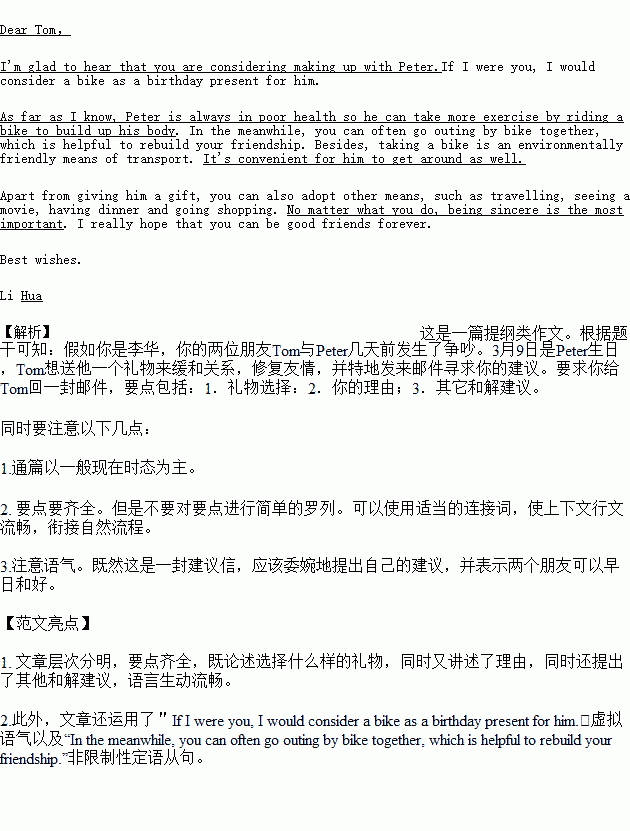题目内容
根据高二年级指定背诵的写作篇目,默写第六篇。以下是汉语提示。答在答题卡上!
假如你是李华。你的两位朋友Tom与Peter几天前发生了争吵。3月9日是Peter生日,Tom想送他一个礼物来缓和关系,修复友情,并特地发来邮件寻求你的建议。请你给Tom回一封邮件,要点包括:
1.礼物选择:
2.你的理由;
3.其它和解建议
____________________________________________________________________________________________
____________________________________________________________________________________________
____________________________________________________________________________________________
____________________________________________________________________________________________
____________________________________________________________________________________________
____________________________________________________________________________________________
____________________________________________________________________________________________
________________________________________________________________________________
 名校课堂系列答案
名校课堂系列答案

 -minded and brave person makes my life more joyful. I was ____, but I found my way.
-minded and brave person makes my life more joyful. I was ____, but I found my way. Paratico said the documents he has uncovered during two years of research form the basis of his latest book Leonardo Da Vinci, a Chinese scholar lost in Renaissance(文艺复兴)Italy. The book, which is due to be published next year, uncovers evidence that there’s a link between Da Vinci and the Far East.
Paratico said the documents he has uncovered during two years of research form the basis of his latest book Leonardo Da Vinci, a Chinese scholar lost in Renaissance(文艺复兴)Italy. The book, which is due to be published next year, uncovers evidence that there’s a link between Da Vinci and the Far East.